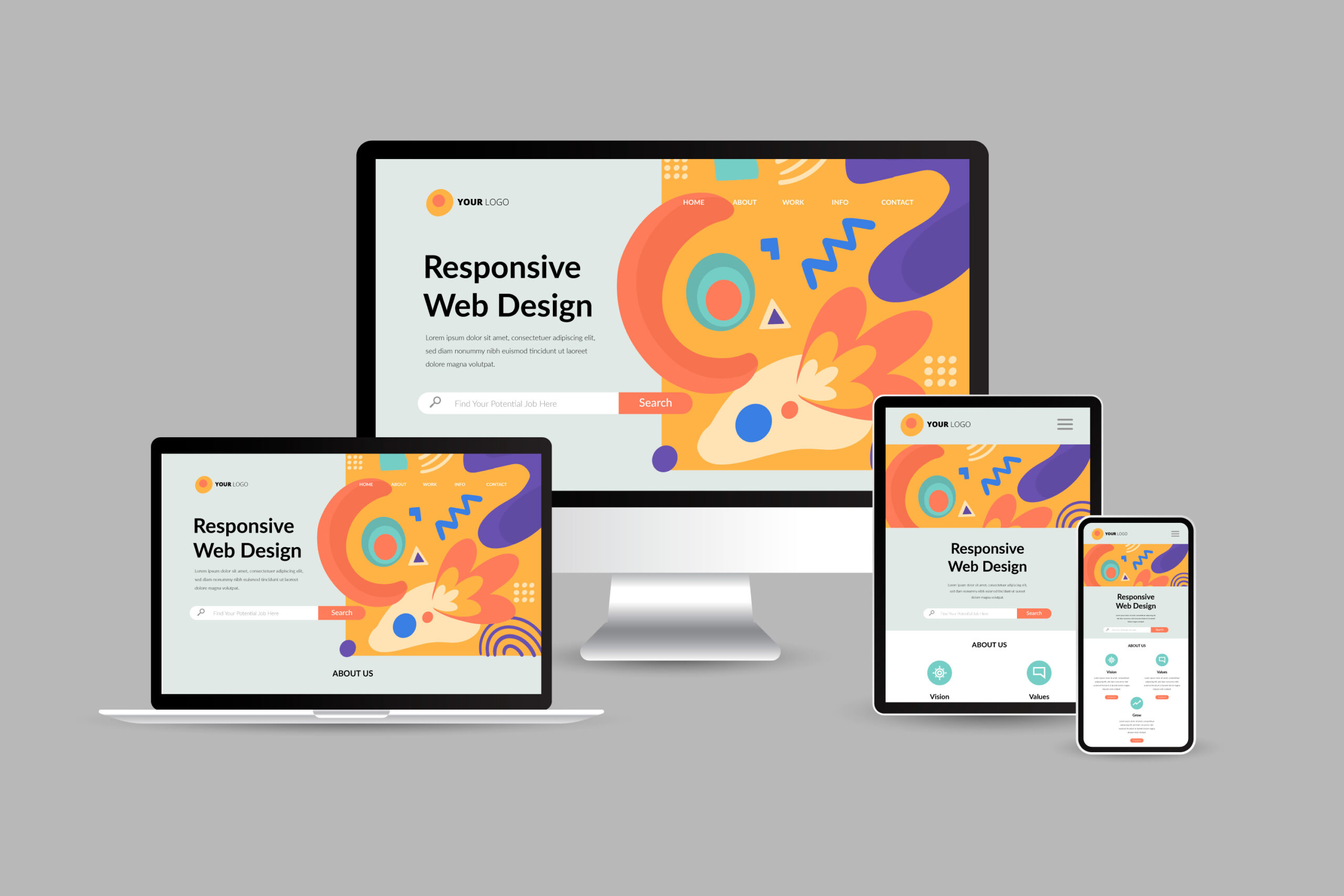Website Design: The Key to Building a Strong Online Presence
In today’s digital age, having a well-designed website is essential for businesses and individuals alike. It serves as the first point of contact for many customers, making it a critical component of your online presence. A website is more than just a collection of pages; it is a powerful marketing tool that can help establish credibility, build trust, and drive conversions. This article explores the importance of website design and how to create a site that stands out, engages visitors, and delivers a positive user experience.
Why Website Design Matters
Website design is not just about aesthetics; it plays a fundamental role in how visitors interact with your site. A well-designed website serves as a reflection of your brand’s identity and values. It creates the first impression that visitors will form about your business, and in many cases, that impression will determine whether they stay on your site or leave.
Good website design is crucial for several reasons. First, it directly impacts user experience (UX). If your site is easy to navigate, visually appealing, and provides valuable content, visitors are more likely to stay longer, explore different sections, and return in the future. Second, search engines like Google use website design factors such as page load speed, mobile optimization, and clear navigation to determine search rankings. A poorly designed site may not only drive visitors away but also negatively impact your search engine optimization (SEO) efforts.
Lastly, an effective website design encourages conversions, whether that means making a sale, collecting contact information, or getting users to download content. The goal of website design is to guide users through a seamless journey, from landing on your homepage to completing a desired action.
Core Elements of Effective Website Design
To create a successful website, you need to focus on several core elements that together contribute to a positive user experience. These elements include:
User-Centered Design
User experience (UX) should always be at the forefront of your website design. A website should be intuitive, meaning visitors should easily understand how to navigate it and find the information they’re looking for. Start by thinking about your audience: Who are they? What are they looking for when they visit your site? A clear and logical site structure, simple navigation, and quick access to key information are essential components of UX design.
Mobile Responsiveness
With more people browsing the internet on mobile devices than ever before, ensuring your website is mobile-friendly is non-negotiable. A mobile-responsive design automatically adjusts to different screen sizes, ensuring that your website looks great on smartphones and tablets, as well as desktops. Google also prioritizes mobile-friendly sites in search rankings, so a responsive design is key for SEO.
Visual Design
The visual appeal of your website plays a significant role in capturing the attention of visitors. Effective use of colors, fonts, images, and layout all contribute to the aesthetic quality of your site. Your website’s visual design should align with your brand’s identity and tone. For example, a professional services website might use clean lines and neutral colors, while a creative portfolio may feature bold images and vibrant colors.
Consistency is also important; fonts, colors, and other design elements should be used uniformly across all pages to create a cohesive look. Additionally, high-quality images and graphics help establish credibility and keep the design fresh and modern.
Fast Loading Speed
Website speed is a crucial factor in user experience. Visitors expect websites to load quickly, and if a site takes too long to load, they are likely to abandon it before even seeing its content. Slow loading times can also harm your SEO ranking, as search engines favor fast-loading websites. To ensure fast page load times, optimize images, minify code, and choose a reliable hosting provider that can handle the traffic demands of your site.
Clear Calls to Action (CTAs)
Every effective website has clear calls to action (CTAs) that guide users toward taking specific actions. Whether you want visitors to make a purchase, fill out a contact form, subscribe to a newsletter, or download a resource, your CTAs should be prominent and easy to understand. Use action-oriented language like “Buy Now,” “Get Started,” or “Learn More,” and place CTAs strategically throughout the site, especially on landing pages.
SEO Optimization
Search engine optimization (SEO) is the process of making your website more visible on search engines like Google. A well-designed website incorporates SEO best practices such as keyword-rich content, optimized images, clean URLs, and internal linking. Moreover, user-friendly navigation and mobile responsiveness are factors that contribute to higher SEO rankings. An SEO-optimized website ensures that your site is discoverable by the right audience, helping to drive organic traffic.
Content Strategy
Content is king, and it is one of the most important factors that affect the success of a website. Your website should have high-quality, relevant, and engaging content that resonates with your target audience. The content should not only inform visitors but also encourage them to interact with your business. A blog, case studies, testimonials, and clear product or service descriptions can help position your site as an authority in your industry and foster trust among visitors.
Security and Trustworthiness
Building trust with your audience is crucial for converting visitors into customers. Incorporating trust signals like SSL encryption (indicated by “HTTPS” in the URL), privacy policies, and secure payment options is essential for ensuring that users feel safe browsing your site. A professional design, along with trust-building elements such as customer testimonials, industry certifications, and clear contact information, helps establish credibility.
Best Practices for Website Design
When designing your website, it’s important to follow best practices that will enhance both user experience and business outcomes. These best practices include:
- Simplicity: Keep the design simple and clutter-free. Avoid overwhelming visitors with too much information at once.
- Navigation: Ensure your website is easy to navigate. Use a clear menu structure and avoid deep navigation hierarchies that make it hard for users to find what they need.
- Consistency: Consistency across the design, fonts, and content makes your website more professional and easier to use.
Testing: Regularly test your website for functionality, speed, and performance. User feedback can help identify pain points and areas for improvement.
The Role of Website Design in Business Success
In today’s competitive digital landscape, a well-designed website can be the difference between a business that thrives and one that struggles. It’s not enough to just have a website—your website must be strategically designed to engage users, provide value, and convert them into customers. Investing in high-quality website design not only improves user experience but also builds brand credibility, enhances SEO, and ultimately drives business growth.
Whether you’re launching a new business or rebranding an existing one, a focus on exceptional website design is crucial for establishing a strong online presence. By combining aesthetic appeal with functionality, performance, and content strategy, you can create a website that not only attracts visitors but also helps achieve your business objectives.







Post Comment